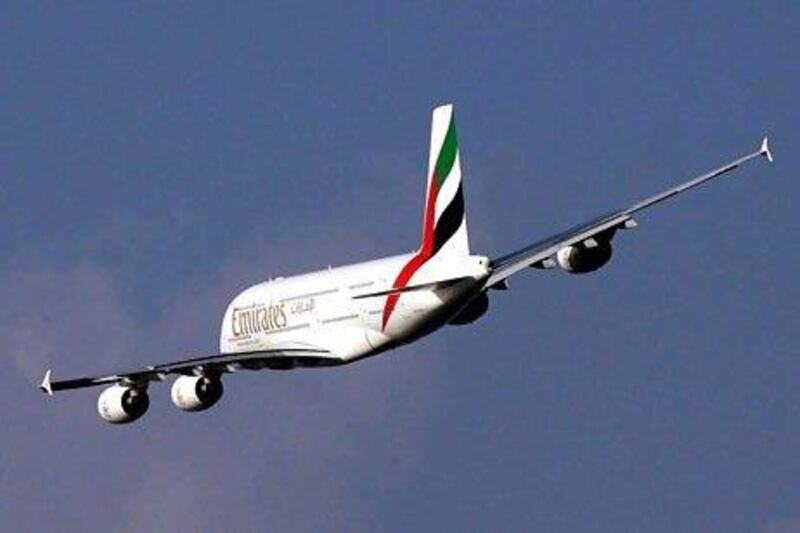SINGAPORE // Emirates Airline is weighing a plan to buy more wide-body jets from Boeing and Airbus as it seeks to expand its global network.
"We are once again reviewing our fleet," Tim Clark, the Emirates president, said yesterday on the sidelines of the airline industry's annual gathering in Singapore.
"We have identified opportunities outside the fleet growth plan that we have."
The additional aircraft would be bought incrementally, rather than in one big order, to help "squeeze a little bit more out of the operation".
Emirates currently operates 153 aircraft and is expanding at a rapid clip, carrying 31.4 million passengers for the financial year ending on March 31, a growth of 14.5 per cent from the previous year.
The airline and its subsidiary companies earned US$1.5bn (Dh5.5bn) for the financial year.
The airline is looking at buying more Boeing 777-300ERs, long-haul, wide-body jets that form the backbone of its current fleet and are used on routes including the US west coast and points in Asia.
It will also look at ordering more of the Airbus A350, a new wide-body jet being developed using lightweight composite materials. The A350 is scheduled to enter the market around 2014.
"The aircraft in frame would be more ERs [extended ranges], possibly some more A350s," he said.
Emirates has 90 Airbus A380 superjumbos on order, and Mr Clark said the airline "would like to buy more" but was unable to do so because of infrastructure constraints at Dubai International Airport.
"We just can't fit it in," he said.
The carrier aims to decide by the time of the Dubai Airshow, scheduled for November, whether to order more aircraft. It currently has 200 on order.
Emirates, based in Dubai, is the largest of the Gulf's three long-haul carriers - the others are Qatar Airways and Etihad Airways - which are redrawing the global aviation map by building up hubs to carry transfer traffic between Asia, Europe, Africa and the Americas.
Their success has triggered accusations of protectionism from some European and Canadian airlines. But this week, the International Air Transport Association (IATA) called on these carriers to stop trying to block the expansion of their Gulf rivals.
With its expansion plans, Emirates will grow to 250 aircraft by 2020 and link virtually any two major cities in the world via its Dubai hub.
The airline hopes to do this by pushing Boeing and Airbus to extend the range of jets such as the A380 and 777, allowing them to reach cities such as Los Angeles from Dubai at full capacity.
Emirates needs an improved version of the 777-300ER between 2017 and 2019 to replace the ones it received in 2005, Mr Clark said.
"We are pushing Boeing to get on with the job," he said.
Airbus designed the A380 superjumbo to fly for 14 hours, but Emirates is pushing the manufacturer to reduce the weight of the jet and extend its range for service between Dubai and the US west coast. Emirates plans to open A380 service to San Francisco next year and to Los Angeles later.





